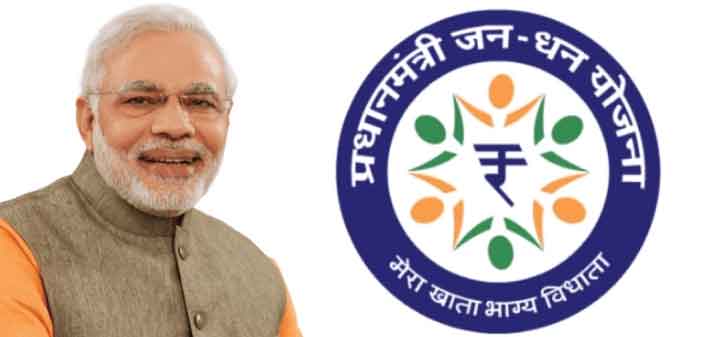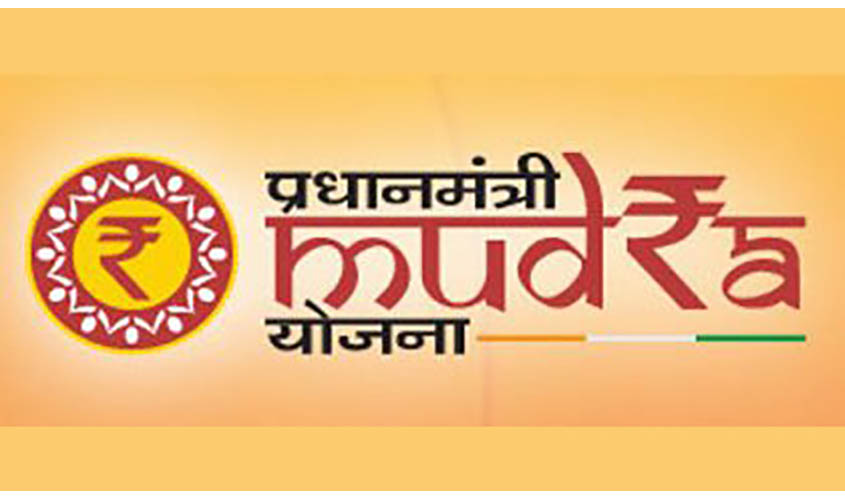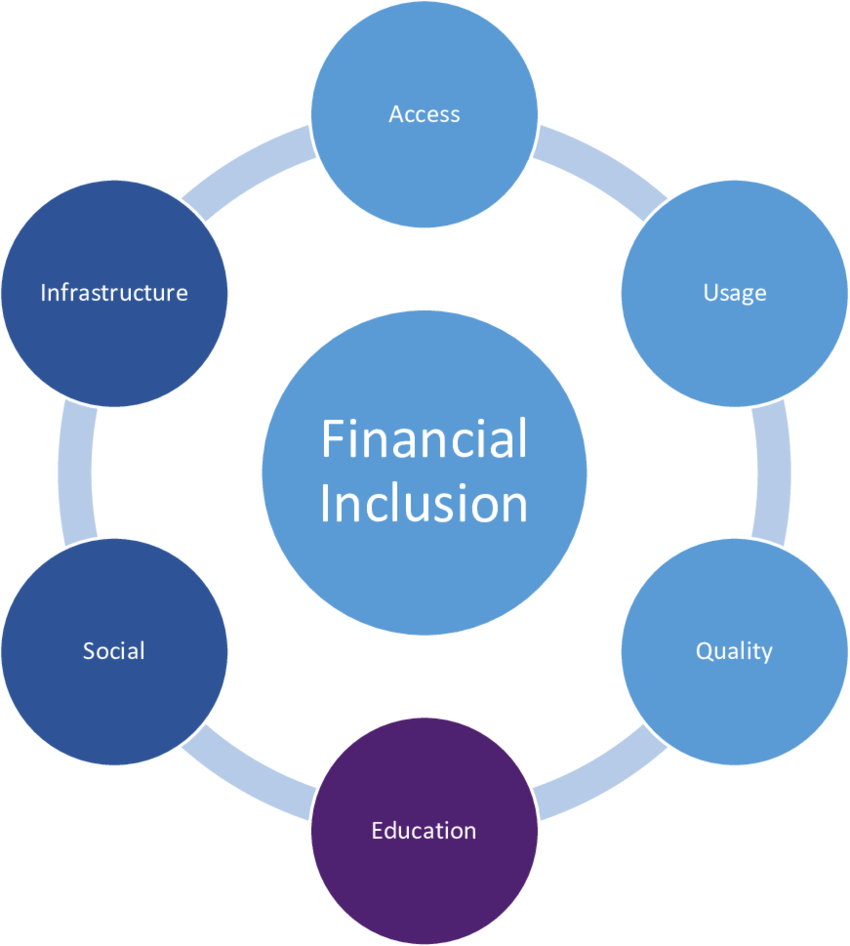Financial inclusion is an important government priority. The goal is to ensure that excluded sections, i.e., weaker sections and low-income groups, have access to a variety of financial services, including a basic savings account, need-based credit, remittance facility, insurance, and pension. The government has recently introduced an efficient program to promote financial inclusion: the PMJDY:
Financial Inclusion Schemes: Pradhan Mantri Jan-Dhan Yojana

The Pradhan Mantri Jan-Dhan Yojana (PMJDY) was launched on 28 August 2014 in order to achieve the goal of financial inclusion by providing financial services to the country’s vast unserved population and to unleash its growth potential. The Yojana envisages-
- Universal access to banking facilities with at least one basic banking account for every household,
- Financial literacy, access to credit, and insurance.
- The beneficiaries will receive a RuPay Debit Card having inbuilt accident insurance cover of 1 lakh.
In addition, those who opened their first bank accounts between 15 August 2014 and 26 January 2015 and met other Yojana eligibility requirements received an Rs.30,000 life insurance policy. As part of its financial campaign, Yojana entered the Guinness World Records for opening the most bank accounts during the week beginning August 23, 2014.
Gold investment schemes
The Government of India launched two new gold investment schemes in November 2015: Sovereign Gold Bonds and Gold Monetisation Schemes. The schemes are intended for
- Reducing the demand for physical gold; and
- Shifting a part of the gold imported every year for investment purposes into financial savings.
Sovereign Gold Bonds
These are issued by the Reserve Bank of India (RBI) on behalf of the Government of India (GoI) in rupees denominated in grams of gold and restricted for sale only to resident Indian entities in de-mat and paper form. The minimum and maximum investment limits per person per fiscal year are two grams and 500 grams of gold, respectively. The interest rate for the 2015-2016 fiscal year was 2.75 percent per annum, payable semiannually.
The duration of the bond is eight years, with an exit option beginning in the fifth year. KYC standards for gold are identical to those for gold. Capital gains tax exemptions are also available. At maturity, redemption is made in rupees equal to the price of gold at the time.
Gold Monetisation Scheme
In this scheme, BIS-accredited CPTCs (Collection, Purity Testing Centres) collect the customer’s gold on behalf of the banks. The minimum amount of gold (bullion or jewelry) that can be deposited is 30 grams, and there is no maximum amount that can be deposited.
A Gold Savings Account can be opened with any of the designated banks and in grams of gold for a short-term period of one to three years, a medium-term period of five to seven years, and a long-term period of twelve to fifteen years. Gold is transferred to refiners by CPTCs. With refiners and CPTCs, the banks will have a tripartite/bipartite legal agreement.
The medium- and long-term interest rates for 2020-21 are fixed at 2.25 percent and 2.5 percent, respectively. Cash and gold are redeemed for short-term deposits, while cash is redeemed for medium- and long-term deposits. The difference between the government’s current borrowing cost and the interest rate paid on its medium- to long-term deposits will be credited to the Gold Reserve Fund.
RBI liberalized the gold-monetization scheme in 2019-20
The RBI liberalized the gold-monetization scheme in 2019-20, allowing charitable institutions, the central government, and state and local governments to deposit the precious metal. Under the scheme, individuals, corporations, mutual funds, and exchange-traded funds were already permitted to deposit gold. The purpose of the plan was to integrate the idle gold held by households and temples into the system, thereby reducing imports.
This action will facilitate the deposit of gold confiscated by government agencies. Now, charitable institutions can deposit their unaccounted-for gold without revealing their identity. In the past, the government received a number of complaints regarding money laundering by charitable trusts; these organizations would accept tax-deductible donations and return the cash to the donor.
In order to prevent money laundering, a 30% tax has been imposed on charitable organizations that receive contributions from unidentified donors. It now means that donors will deposit unaccounted-for gold and receive cash after a 30% deduction from these trusts. However, this also allows unaccounted-for gold to enter the scheme. According to some experts, such funds could also be used to fund political campaigns.
Under the terms of the program, a depositor must deliver the gold to a collection center, which also serves as a hallmarking center. After melting the gold, which is then sent to refineries for bar production, these centers issue certificates of purity. After receiving purity certificates from depositors, banks issue deposit receipts.
Mudra Bank

According to the Indian government, only 1.25 billion people are employed by India’s large industries, while 12 billion people are employed by the nation’s micro-units. There is a need to focus on these 5.75 crore self-employed people (owners of micro-units) who utilize X11 lakh crore in funds but owe an average of Rs.17,000 per unit. Capital is essential for small business owners. These entrepreneurs rely heavily on local moneylenders to meet their financial needs.
In April 2015, the Government of India launched the Micro Units Development and Refinance Agency Bank (MUDRA Bank) with the intention of providing funding to these unfunded non-corporate enterprises. It was introduced as the PMMY (Prime Minister Mudra Yojana). Important characteristics of the MUDRA Bank are listed below:
- Under this banking model, the micro-units can avail of up to Rs.10 lakh loan through a refinancing route (through the Public and private sector banks, NBFCs, MFIs, RRBs, District Banks, etc).
- The products designed under it are categorized into three buckets of finance named Shishu (loan up to Rs.50,000), Kishor Rs.50,000 to Rs.5 lakh) and Tarun Rs.5 lakh to Rs.10 lakh).
- Though the scheme covers the traders of fruits and vegetables, in general, it does not refinance the agriculture sector.
- This scheme lacks a fixed interest rate. According to the Indian government, banks are currently charging interest rates between Base Rate plus one percent and seven percent per annum. The interest rates on loans are expected to vary based on the risk posed by the businesses seeking financing. There is no general interest rate subsidy unless the loan is linked to another government program.
According to the government, as of March 2020, a total of 22.53 crore loans had been sanctioned since the scheme’s inception, with total loans disbursed amounting to approximately Rs. 11,51 lakh crores. Seventy percent of the loan recipients under the program are women.
In the meantime, the rise in Mudra loans’ nonperforming assets has been a source of concern for both the government and the RBI. According to the Ministry of Finance, between April and December of 2019, the net NPA rate for Mudra loans rose to 2.88 percent (against 2.52 percent of the same period in 2018).

